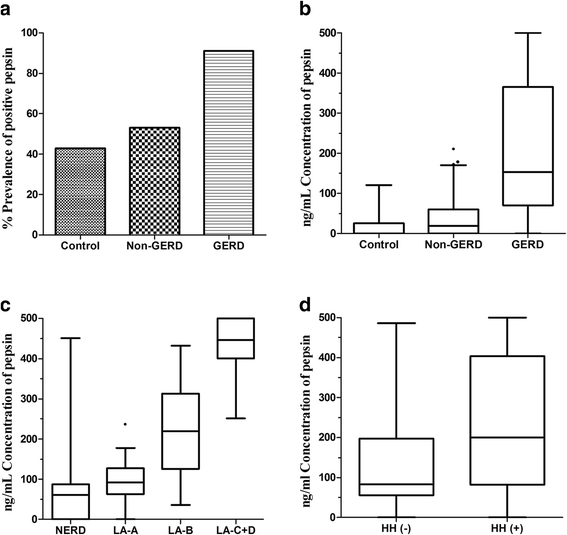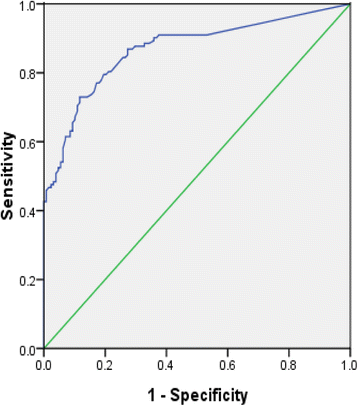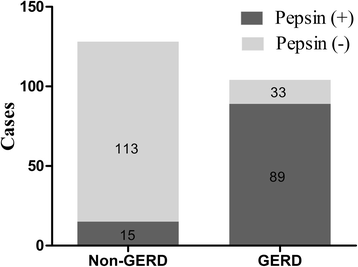The diagnostic value of pepsin detection in saliva for gastro-esophageal reflux disease: a preliminary study from China
- PMID: 29041918
- PMCID: PMC5645897
- DOI: 10.1186/s12876-017-0667-9
The diagnostic value of pepsin detection in saliva for gastro-esophageal reflux disease: a preliminary study from China
Abstract
Background: None of current diagnostic methods has been proven to be a reliable tool for gastro-esophageal reflux disease (GERD). Pepsin in saliva has been proposed as a promising diagnostic biomarker for gastro-esophageal reflux. We aimed to determine the diagnostic value of salivary pepsin detection for GERD.
Methods: Two hundred and fifty patients with symptoms suggestive of GERD and 35 asymptomatic healthy volunteers provided saliva on morning waking, after lunch and dinner for pepsin determination using the Peptest lateral flow device. All patients underwent 24-h multichannel intraluminal impedance pH (24-h MII-pH) monitoring and upper gastrointestinal endoscopy. Based on 24-h MII-pH and endoscopy study, patients were defined as GERD (abnormal MII-pH results and/or reflux esophagitis) and non-GERD otherwise.
Results: Patients with GERD had a higher prevalence of pepsin in saliva and higher pepsin concentration than patients with non-GERD and healthy controls (P < 0.001 for all). The pepsin test had a sensitivity of 73% and a specificity of 88.3% for diagnosing GERD using the optimal cut-off value of 76 ng/mL. Postprandial saliva samples collected when the symptoms occurred had a more powerful ability to identify GERD.
Conclusions: Salivary pepsin test had moderate diagnostic value for GERD. It may be a promising tool to replace the use of currently invasive tools with advantages of non-invasive, easy to perform and cost effective.
Trial registration: ChiCTR-DDD-16009506 (date of registration: October 20, 2016).
Keywords: 24-h multichannel intraluminal impedance pH monitoring; Diagnosis; Endoscopy; Gastro-esophageal reflux disease; Pepsin.
Conflict of interest statement
Ethics approval and consent to participate
Approval for this study was obtained from the institutional review boards of the General Hospital of the PLA Rocket Force (Beijing, China) (No. KY2016021), and written informed consent was acquired from all participants.
Consent for publication
Not applicable.
Competing interests
The authors declare that they have no competing interests.
Publisher’s Note
Springer Nature remains neutral with regard to jurisdictional claims in published maps and institutional affiliations.
Figures



References
MeSH terms
Substances
LinkOut - more resources
Full Text Sources
Other Literature Sources
Medical
Research Materials

